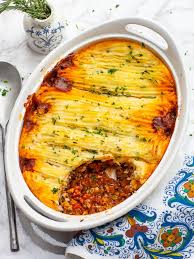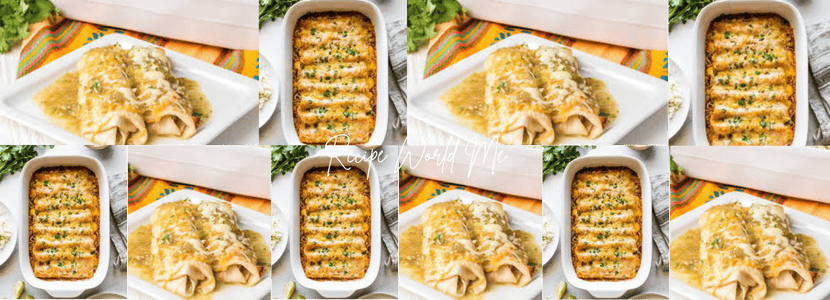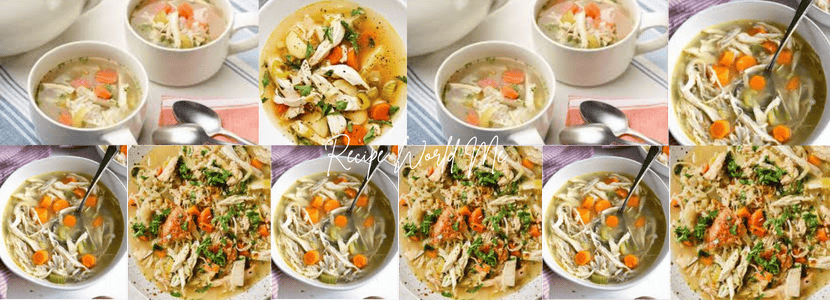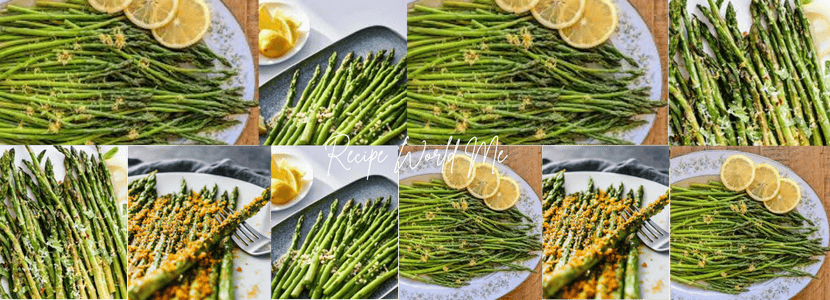
Unwrap the Magic: Your Ultimate Guide to Crafting the Perfect Homemade Shawarma
Have you ever strolled by an open street food fry up, and been enticed by the intoxicating aroma of smoked, spiced meat slowly smoking on a vertical spit? The allure of that sight, the tempting aroma of that food, it is the calling of shawarma, one of the brightest icons of cuisine that has made their mark and got people hungry all around the world. It is not just a meal, it is the memory of the urge of the late nights, bustling markets, or a fast satisfying bite and one goes on with his day. But have you ever thought perhaps you might be able to make that same magic, that magical combination of tender juicy meat and fresh zesty accompaniments in your very own kitchen? And maybe you even attempted to do it; it proved to be slightly intimidated without the giant rotating grill. Well, hold on to your socks! The key to amazing home made shawarma did not seem as mysterious as you would expect. It is a trip of taste, craft and some cooking enthusiasm and I am excited to take you on all the delightful journeys.
Shawarma, a popular street food in the Middle East is a collection of sweet marinated meat that has been cooked to perfection, seasoned and thinly shaved, and usually placed inside of a warm flat bread along with a variety of fresh vegetables and creamy sauces. It is a dish with a stunningly varied history and variations and a divine flavour that makes it a truly exciting thing to learn, as well as a wonderful one to delight in. So, shall we take this aromatic journey and discover how to make your own perfect homemade shawarma, turn your kitchen into a busy Middle Eastern restaurant?
The Heart of the Feast: What Exactly is Shawarma?
The shawarma is at its simplest a dish of finely cut, marinated meat and tends to be roasted on a vertical rotisserie. The name of this food itself might have been originated out of Turkish word çevirme, which means turning and is certainly the direct reference to the turning spit on which the meat is cooked. The meat cooks evenly on this slow constant rotation, bastes with its own juices and forms a beautiful caramelised outer crust to the meat whilst inside is still incredibly tender and juicy.
A Culinary History: Tracing Shawarma’s Roots
The history of shawarma is very ancient back to the Ottoman Empire to a city called Bursa in Turkey in the 19th century. It developed out of dner kebab, a dish which too has meat grilled on a vertical spit. And as Ottoman Empire expanded so did its food invasion and the dener kebab spread to the rest of the Middle East, being adjusted to be adapted to local tastes and flavors. It took the name shawarma in the Levant region (current-day Lebanon, Syria, Jordan, and Palestine).
Diversities in regions evolved and gave their own interpretations of the dish. Somewhere in Syria and Lebanon, chicken shawarma emerged as a popular item especially marinated in a combination of citrus, garlic and warm spices. Elsewhere lamb or beef shawarma was the focus. The portability and tastiness of the dish proved profitable to the vendors and consumers carried it, and it was iconic because it is a street food. The first real shawarma that I tasted was in Beirut and the smell of the shawarma got my mouth watering. The mere basicness of perfectly roasted chicken, the sourness of the pickles, and the creamy garlic cream dip on a hot pita was something that I still recollect clearly. He was not the only one who got food; he was embraced culturally.
Shawarma vs. Its Cousins: Doner, Gyro, and Tacos al Pastor
As much as its cousin dner kebab (Turkish) and gyro (Greek), which have the same ancestor, and as much as even having its Mexican cousin in the tacos al pastor, there exist particular differences that make each one unique.
1-Shawarma: Normally includes thinly sliced lamb or beef or chicken which has been extensively marinated in a spiced mixture of Middle East spices such as cumin, coriander, turmeric, paprika, and all-spice, and may be accompanied by garlic, lemon juice and vinegar. Typically, it is grilled in pita or flatbread using tahini sauce (lamb/beef), garlic sauce (chicken) and pickles and fresh vegetables.
2-D-ner Kebab: of Turkish origin, frequently made with ground or finely minced meat (lamb, beef, or chicken) that is pressed against the spit. The marinade should also be fairly straightforward as salt and pepper and in some cases paprika are used. Usually served flatbread-style, or plated, sometimes with yogurt or spicy red sauce.
3-Gyro: Greek, typically formed of slices of pork, chicken or combination of beef/ lamb stacked on top of each other, usually seasoned with oregano, thyme and garlic. Presented as pita with tzatziki (cucumber-yogurt) sauce, tomatoes, onions and sometimes fries.
4-Tacos al Pastor: Mexican one of the most interesting side effects of the Lebanese imigration. It contains pork marinated with a bright adobo sauce (chiles, spices, pineapple) which it is cooked vertically on a spit (known as a trompo). Spread with pineapple and onion and cilantro in tortillas.
The defining features include the different spices, marinades, meat of choice, and the customary dishes that accompany the meat every period which leaves unique tastes of each rotating meat dish.
| Characteristic | Shawarma | Döner Kebab | Gyro | Tacos al Pastor |
|---|---|---|---|---|
| Origin | Levant (Middle East) | Turkey | Greece | Mexico (Lebanese influence) |
| Meat Type | Chicken, Lamb, Beef | Lamb, Beef, Chicken (often minced/ground) | Pork, Chicken, Beef/Lamb mix | Pork |
| Marinade/Spices | Cumin, Coriander, Turmeric, Paprika, Allspice, Garlic, Lemon, Vinegar | Salt, Pepper, Paprika (simpler) | Oregano, Thyme, Garlic | Adobo (Chiles, Spices, Pineapple) |
| Typical Sauce | Tahini (lamb/beef), Garlic Sauce (chicken) | Yogurt sauce, Spicy red sauce | Tzatziki (cucumber-yogurt) | Salsa, Lime |
| Accompaniments | Pickles, Tomatoes, Onions, Lettuce | Lettuce, Tomatoes, Onions | Tomatoes, Onions, Fries | Pineapple, Onion, Cilantro |
The Secret’s in the Sauce: Crafting the Perfect Marinade
The secret of any best shawarma is its marinade. It is not just flavour here, but to tenderise the meat and to fill it with those classic aromatics that can help completed shawarma to be so hard to resist.
Spice It Up: Essential Shawarma Spices
A traditional shawarma marinade is based on a mixture of spices that are warm and earthy in nature and aromatic. Whilst recipes differ, a main blend usually consists of:
| Spice | Description |
|---|---|
| Cumin | Ground, gracious, base flavor |
| Coriander | Lemony, slightly sweet |
| Paprika | Sweet, smoky, adds color |
| Turmeric | Earthy, adds golden color |
| Allspice | Complex mix of cinnamon, nutmeg, and cloves |
| Cinnamon/Nutmeg/Cloves | Used minimally to add depth and warmth |
| Black Pepper | Spicy, adds a kick |
A little cayenne pepper may be added to some recipes to create some heat, or some dried ginger to add a sharpness. The trick is balance, do not use too much of one spice at the expense of the others.
The Tender Touch: Acids and Aromatics
| Ingredient | Role in Flavor & Texture |
|---|---|
| Lemon Juice | Adds tangy contrast to rich spices and helps tenderize meat |
| Vinegar | Provides acidity and tenderization; white vinegar or apple cider vinegar work well |
| Garlic | Essential for a bold, spicy taste |
| Olive Oil | Helps carry fat-soluble flavors from spices and keeps meat moist |
| Yogurt (optional for chicken) | In chicken shawarma, lactic acid tenderizes meat for a softer texture |
My own piece of advice: Don not stint with the garlics! To 1kg of chicken, I will tend to use 6-8 big cloves, minced. It looks like too much but muzzles down exquisitely during cooking and includes an element of the much-needed shawarma zest. I also prefer to lightly toast my whole cumin and coriander seeds and then grinding it out very fine lending a far more pronounced aroma- it makes a world of difference!
Did You Know? The unique shawarma, dner cooking style based on spit vertical cooking means that the fat drips towards the bottom and dynamically basasts the bottom meats keeping them wet and tasty whilst grilling. This self basting process plays a vital role in making them so juicy!
Meat Matters: Choosing and Preparing Your Protein
Although the vertical spit is a trademark, it is possible to perform wonders at home with regular kitchenware. It is all a matter of the meat cut and preparation.
1-Chicken Shawarma: Thighs are Your Best Friend
In making chicken shawarma, boneless, skinless thigh is better than the breasts. Why? There is additional fat and connective tissue, and, thus, thighs remain very juicy and tender even in case they are cooked at higher temperatures or longer. Considering that chicken breasts are leaner, they are easily dried.
Preparation: Chicken thighs need to be cut to thin even strips. This exposes the most possible surface area to the marinade and gives better cooking faster and evenly.
2-Beef/Lamb Shawarma: Go Tender
When making beef or lamb shawarma, be selective of the cuts; opting either for those that will tenderize well under the influence of the marinade and a short cooking time, or cuts that can eventually be roasted low and slow to tenderness.
| Meat Type | Recommended Cuts | Preparation Notes |
|---|---|---|
| Beef | Flank steak, sirloin, thin-sliced round steak | Cut across the grain for tenderness |
| Lamb | Boneless leg or shoulder | Remove excess fat, can be shaved |
| Preparation (general) | — | Slice meat as thinly as possible; for beef, partially freeze to make slicing easier |
3-Marinating Process: the Virtue is Patience
The meat has to sit so that the flavours can blend and the acids can do their miracle of tenderisation to the meat once you cut it and marinate it.
| Marination Time | Details | Notes |
|---|---|---|
| Minimum | 4 hours (refrigerated) | Basic flavor and tenderness |
| Ideal | Overnight (12–24 hours) | Maximum flavor penetration and tenderness |
| Maximum | 48 hours (for tougher cuts) | Beyond this, texture may be affected |
| General Tip | — | Longer marination enhances flavor and tenderness; don’t rush this step |
Cooking Your Shawarma: Home Kitchen Edition
No spit stuff at all? No problem! Cooking shawarma at home is one of the best processes with some top-notch easy ways to get that wavered exterior and a soft juicy interior.
1-The Oven Roast: Zero Maintenance Perfection
This is probably the most hands off and simplest way to make homemade shawarma.
2-Spread: Put the marinated meat in a single layer on a large baking sheet. Do not overcrowd the pan since this will steam the meat as opposed to browning it. Two pans may be used.
3-Roast: High temperature,8Roast in a preheated hot oven, at high temperature, about 200-220 8C (400-425 8F).
4-To Flip & Broil: Cook 15-20 minutes, then turn the meat and roast another 10-15 minutes, or well browned and a trifle charred on edges. To get a little more char, finish off under a broiler briefly, watching to ensure that it does not burn.
4-Rest & Slice: After cooking, take out of the oven and allow resting of the meat 5 minutes, and then if necessary cut into small bite size chunks.
The Skillet Sizzle: Quick and Charred
A hot cast-iron pan (or hot skillet) is best when you only have a small quantity or when you want a quicker cook with good char.
| Step | Instruction | Notes |
|---|---|---|
| Heat | Place large skillet or cast-iron pan over medium-high heat until very hot; add 1 tbsp oil | Pan should be hot enough for a quick sear |
| Sear | Arrange marinated meat in a single, uncrowded layer | Cook in batches if necessary |
| Brown | Cook 3–5 minutes per side, turning occasionally | Aim for browned, crispy edges with street food-style char |
| Rest and Slice | Remove from heat, let rest briefly, then slice as needed | Resting helps retain juices |
The Grill Master: Smoky Outdoor Flavour
| Step | Instruction | Notes |
|---|---|---|
| Outdoor Grill | Use to achieve a smoky, delicious flavor | Works best with charcoal or wood for extra smokiness |
| Skewers | Thread marinated meat onto skewers | Keep pieces evenly sized for even cooking |
| Grill | Cook on medium-high heat until done and nicely browned on both sides | Turn skewers occasionally for even browning |
| Rest & Slice | Remove from grill, let rest, slide meat off skewers, and slice | Resting helps keep meat juicy |
The Assembly: Building Your Dream Shawarma Wrap
After you cooked that shawarma meat a bit, it is time to have some fun: assembly! Here, you add your own flair in the form of crunchy, creamy and fresh ingredients to your wrap.
1-The Bread: pita or flatbread.The traditional option is warm pita bread or a thin flatbread (e.g. khubz or lavash). To make it pliable, warm it a little bit on a dry skillet, or in the microwave.
2-The Sauces:The Much Needed Creaminess.The shawarma is never complete without its flavoring sauces.
3-Garlic Sauce (Toum): Chicken shawarma can not be imagined without a potent creamy emulsified garlic sauce. it is made of garlic, oil, lemon juice and salt and whipped up as a thick white spread a la mayonnaise. It is amazingly simple to prepare at home using a food processor.
4-Tahini Sauce: A creamy tahini sauce is one that is normally employed with beef or lamb shawarma. It is a mixture of tahini (sesame paste), lemon juice, garlic and water that is whisked together to smooth and pourable consistency.
The Toppings: Crunch and Freshness
Such new elements break through the fat of meat and make their necessary texture.
| Ingredient | Description | Notes |
|---|---|---|
| Pickles | Pickled cucumbers; for chicken shawarma, pickled turnips (often pink from beetroot) | Adds sharp pungency |
| Fresh Tomatoes | Diced | Provides freshness and juiciness |
| Onions | Thinly sliced red or white onions, sometimes mixed with sumac | Adds tangy, colorful touch |
| Lettuce/Cabbage | Shredded lettuce or finely shredded cabbage | Adds crunch |
| Parsley | Chopped fresh parsley | Adds herbaceous flavor |
How to fit together:
| Step | Instruction | Notes |
|---|---|---|
| 1 | Place heated pita or flatbread | Warm bread makes wrapping easier |
| 2 | Add sauce (garlic or tahini) | Spread a dollop in the center |
| 3 | Add cooked shawarma meat | Generous serving for a hearty wrap |
| 4 | Add toppings | Pickles, tomatoes, onions, lettuce, parsley |
| 5 | Roll tightly, tucking sides | Helps keep fillings in place |
| 6 | Optional toast | Lightly toast on a dry skillet 1–2 minutes to seal |
Beyond the Wrap: Creative Shawarma Ideas
The shawarma is incredibly tasting with a flavour profile that can be used in a lot of other awesome ways, however, the classic wrap is king.
1-Shawarma Bowls: Offer the meat and toppings over a mound of voluminous Basmati rice or quinoa over a plate that is deconstructed and healthier.
2-Shawarma Salad: This is a light salad but with a hefty serving when the meat is mixed with salad made up of greens and cucumber, tomatoes and seasoned with lemon-tahini dressing.
3-Shawarma Loaded Fries: Top the fried fries with the cooked meat of shawarma, pour the garlic sauce and tahini on it, and garnish with pickled vegetables and herbs what a treat it is!
4-Shawarma Pizza: you can use it as a topping on a Middle Eastern-style pizza, maybe served on a garlic sauce base.
Troubleshooting Your Homemade Shawarma
Even when you mean it the best it does not always turn out so well. The following are some of the problematic areas and solutions.
DRY or TOUGH Meat:
1-Cause: overcooked, lack of fat or not enough marinating.
2-Fix: In case it is a bit dry, a liquid dash of extra olive oil or sauce will do the trick. Make sure that you use chicken thighs in chicken shawarma. With beef/lamb, remember it should be sliced thin and well marinated. The next time cook less or a little lower.
Meat is lacks flavour:
1-Cause: too little marinade, inadequate time during the marinating process, or stale spices.
2-Fix: Spices need of course be fresh and strong spices. Minimally 12 hours, preferably 24 hours to marinate. To boost the flavour at the time of serving, a pinch of extra shawarma spice mix on the meat will work wonders.
Meat Is not Charred:
1-Reason: the pan/oven was not hot enough or the pan was too full.
2-FIX: Be sure that your skillet is smoking hot when you add meat, or that your oven is preheated to high. Cook in smaller quantities so the meat is able to brown instead of steaming. Char with the broiler.
Your Shawarma Awaits!
There is actually something extraordinary in being capable of making a dish which is a flight to another part of the world, being in your kitchen. Making homemade shawarma is not solely about a recipe, it is also an adventure into the world of exciting spices, a course in the art of long marinating and a tribute to fresh and intense flavors. It is a way of cooking that smells awesome as it takes your nose back to the aromatic feelings and gratified groans of your family.
I recall the first time I first managed to make homemade garlic sauce, the toum. It was something of an eye-opener! The moment of pungent, creamy magic that is so very much to chicken shawarma, all of a sudden felt so accessible. This is great satisfaction in cooking, these little moments of triumph in the kitchen. Never be afraid to mix and match your spices depending on your preference, learn what combination of toppings suits you best, and what your preferred method of cooking the meat is.
Now that you understand all the tools and knowledge involved in making your own shawarma adventure, you can start. Then, get out all your delicacies, turn on the music, and get prepared to infuse your house with the aroma of perfectly spiced tender shawarma. It is time to open the magic and enjoy each and every, delicious bite!
Frequently Asked Questions
Q.How can I cook the chicken at home to make it taste like real shawarma without a giant rotating spit?
A.That is the biggest question! The closest thing to replicate that shawarma-stand sort of flavour is to marinate chicken thigh fillets over a few hours and then drop into an extremely hot pan or a tawa. Have them have a good crisp on the outside and remain moist inside. After cooking, allow the chicken to have a few minutes down time before you cut the cooked chicken into thin strips. The technique will provide you with juicy tender meat having those delicious crunchy pieces.
Q.What is the best bread to use? Can I use a regular chapati?
A.A thick soft pita bread is the best type because it holds all the fillings and does not need to tear. These are sold in most good bakeries and bigger supermarkets. Although you can apply a chapati now and then in an emergency, it may be too thin and may split. An improvement on local sourcing where there is no good pita is a plain soft paratha; paratha are sturdy enough to absorb the juicy chicken and sauces.
Q.What is tahini, and where can I find it in Lahore?
A.Tahini is one of the key ingredients for the real shawarma sauce. It is a nutty paste consisting of just ground sesame seeds (til) – similar to peanut butter. Tahini can usually be found in jars in the international food section of bigger stores like Al-Fatah, Jalal Sons or Carrefour. It gives a beautiful creaminess and atemperature to the sauce too.
Q.How do I make that creamy white garlic sauce they serve at shawarma shops?
A.The super-intense garlic sauce (toum) is a bit of a challenge, but you can make a simpler, and equally delicious version at home that is extremely popular in local shawarma restaurants too. Just combine a bit of plain yogurt (dahi) with a couple of crushed garlic cloves (lehsan) a nice spritz of lemon juice (limu) and a little salt. To better achieve an even creamier texture, replace the yogurt with the base of mayonnaise.
Q.What kind of pickles should I add to my shawarma?
A.A very pleasant tart crunch that separates the richness of the meat and sauce added, the pickles! You can also find jars of pickled cucumbers or mixed veggies in vinegar at an grocery store. Or, for the simplest of homemade versions, slice a bunch of cucumbers (kheera) and an onion (pyaaz) thinly and let them sit for about 30 minutes in a bowl of white vinegar, a pinch of salt and a pinch of sugar before serving.
Q.My chicken shawarma always turns out a bit dry. How do I keep it juicy?
A.Juicy shawarma lies in the proper cut of meat and a nice marinade. Whenever possible, use boneless thighs rather than breast meat, because thigh is more fatty and remains far tender and juicier cooked. Also, ensure that your marinade contains yogurt (dahi) and lemon juice since the acidity of the lemon flavor would help in softening the chicken. Just letting it marinate 23 or so hours makes a HUGE difference!










